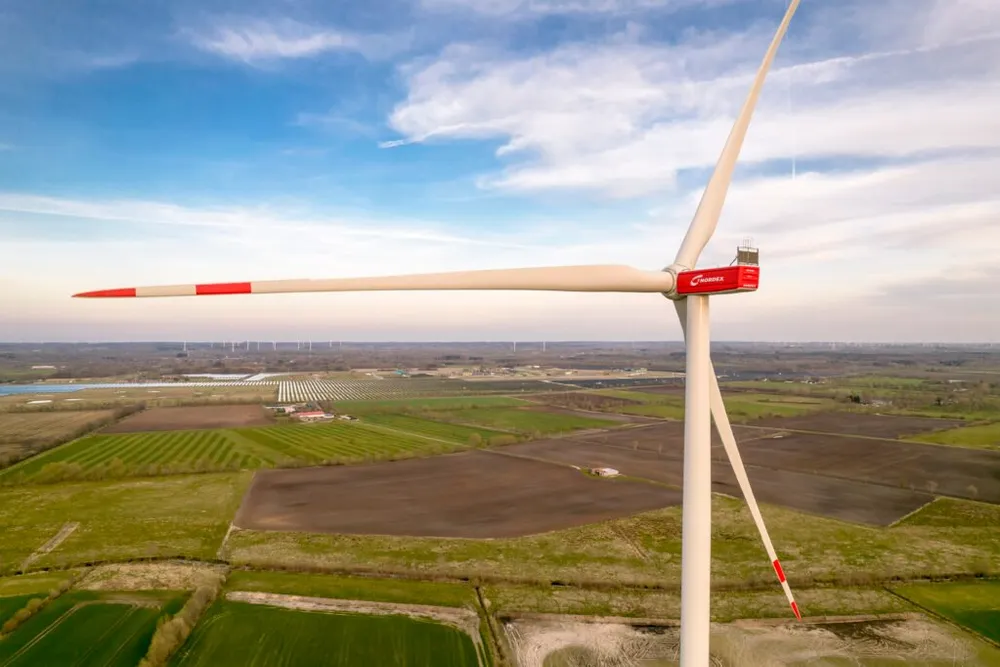Nordex rejects 'race for turbines' above 7MW with Chinese rivals
Larger machines 'don't bring benefit', chief commercial officer tells Recharge

“We don’t have to race for turbine size. Much more important for us is that we do have the right product for the market,” Özarslan said in an interview at the recent Husum Wind event.
“This is the product which we'll be focusing on in the next three, four years, because this is the right product for many markets.”
The machine is adapted to European and other core markets with a focus on reliability and quality, the CCO said. Nordex earlier this month said it has already received over 2GW in orders for projects with the N175/6.X.
“A bigger turbine is not our focus point at the moment. The race about having the bigger turbine, having the bigger rotor, having the bigger generator, you can only fail with that. This is not what the customers are requesting.”
Clients look at a competitive overall cost of energy, which is not just determined by the power rating, Özarlsan explained.
“They are requesting a turbine which is able to be transported and installed, because with a bigger turbine, you have more issues with logistics, with installation, with cranes, and also the cost will go exponentially upwards.”
Larger Chinese models
“In a certain time frame, when the markets require that you go to a bigger rotor, these [larger turbines] will automatically come, as it has also happened in former years. But today, a 7MW turbine with a 175-meter rotor is the right size for many markets,” Özarslan said.
“Even if you come up with a 9, 10MW turbine today, nobody is going to buy that because you don't have the environment to be able to install that turbine.”
Nordex’s core markets in Europe, such as Germany, are densely populated, making road or rail transport of too large nacelles and blades already a rather complex endeavour. Even bigger turbines, at least at the moment, would present too big challenges.
Özarslan's comments echo those of other Western OEMs, and even Chinese manufacturers have started to acknowledge that the European market may not be ready for too big onshore wind turbines.
“Europe doesn’t have the infrastructure” for larger turbines, Soares said.
Smaller turbines for UK
While Nordex in continental Europe is mostly marketing its 6 or 7MW machines, it is still selling former, smaller products in some markets, such as the UK, which in part have local size or height restrictions, Özarslan said.
For the UK, for example, the company’s N133/4.8MW turbine for strong-wind sites, or its N149/4.0-4.5MW model, are well-suited, he added.
Having the right product for customers – and without quality issues – has helped Nordex become the market leader in order intakes in Europe in the past three years, with about 45% market share, Özarslan said.
Lower ASP
The company in recent years has also been able to sell its turbines at a lower average sales price (ASP) than Western competitors such as Vestas, which may have been another reason for its rising success.
Turbines in contracts won by Nordex in the second quarter of this year, for example, had an ASP of €0.97m ($1.13m) per megawatt of turbine capacity, while Vestas was able to achieve an ASP of €1.11m/MW in the same period. (Both were onshore as Vestas had no offshore orders during the second quarter).
Özarslan, however, insisted that the ASP is the “wrong factor to focus on only”.
“It is a KPI that varies a lot. It depends on whether you supply in full scope, or maybe in a limited scope, on whether you are delivering in very high-cost markets, or low-cost markets,” he said.
“If project execution costs are so high, you will have a different cost level for the same product in Finland than in Turkey, and this means that the ASP price in Finland will be much higher than in Turkey,” he explained.
Nordex considers Europe, Turkey and the US its core markets, and is also active in Canada and Australia.
(Copyright)